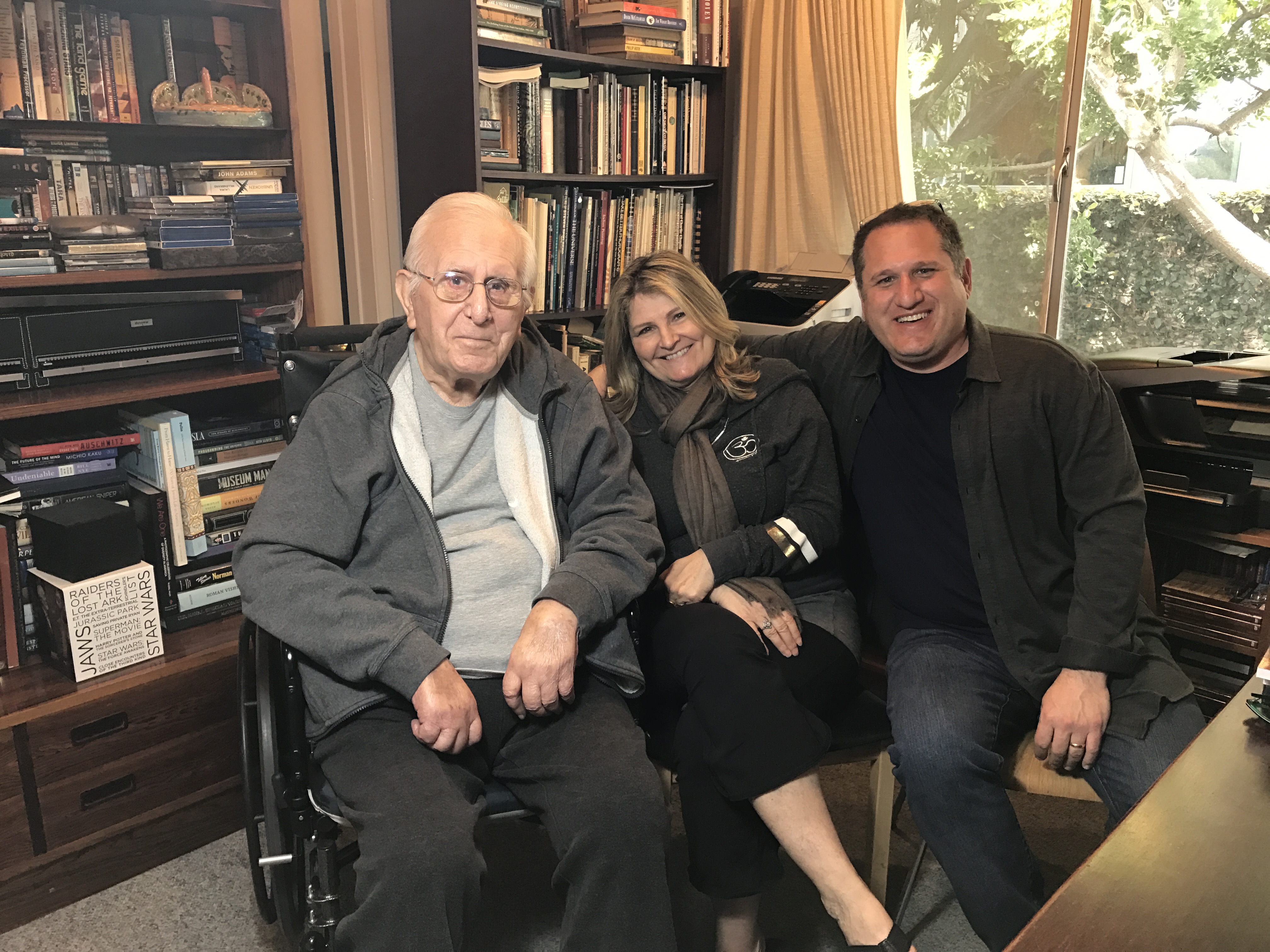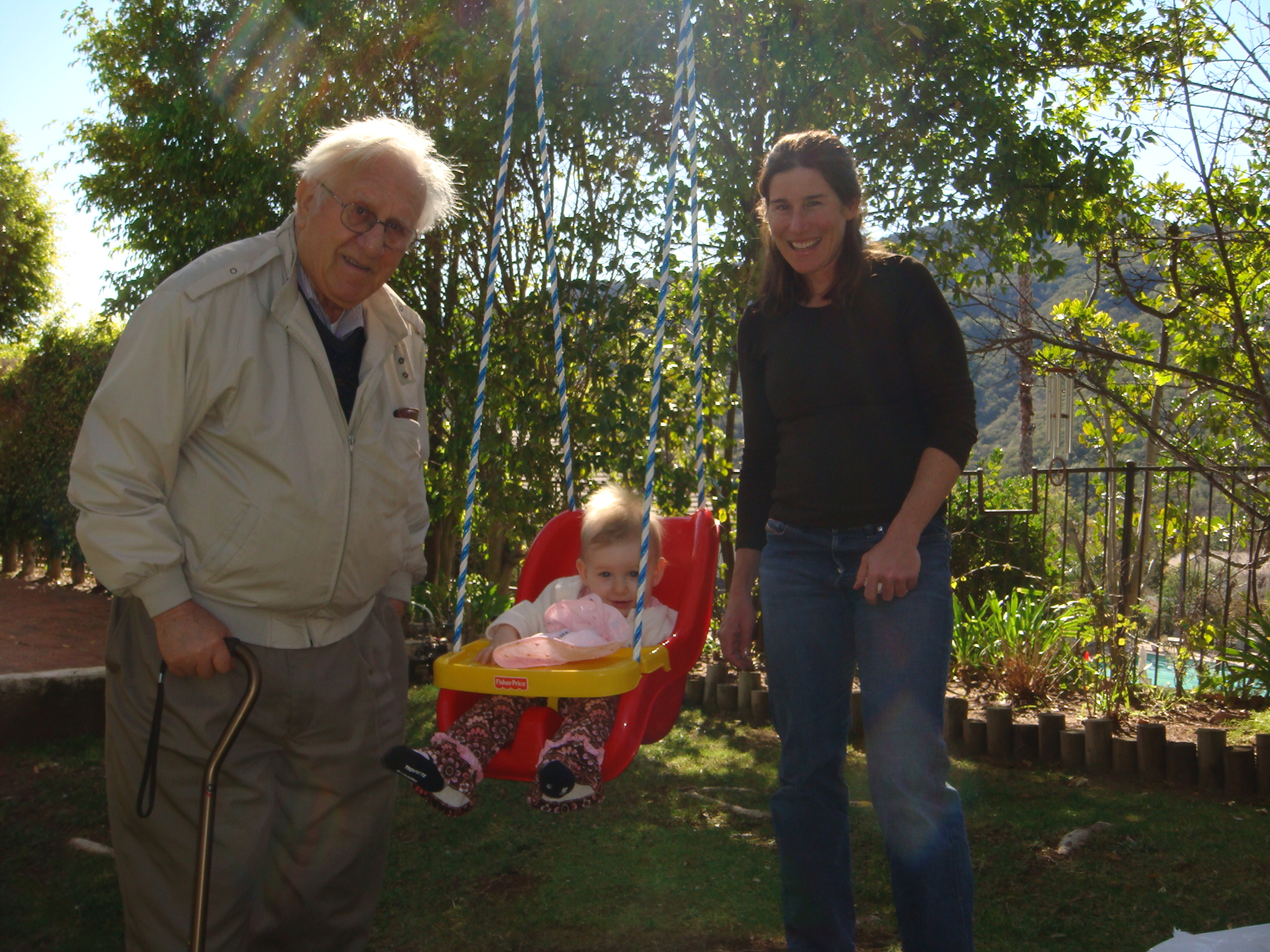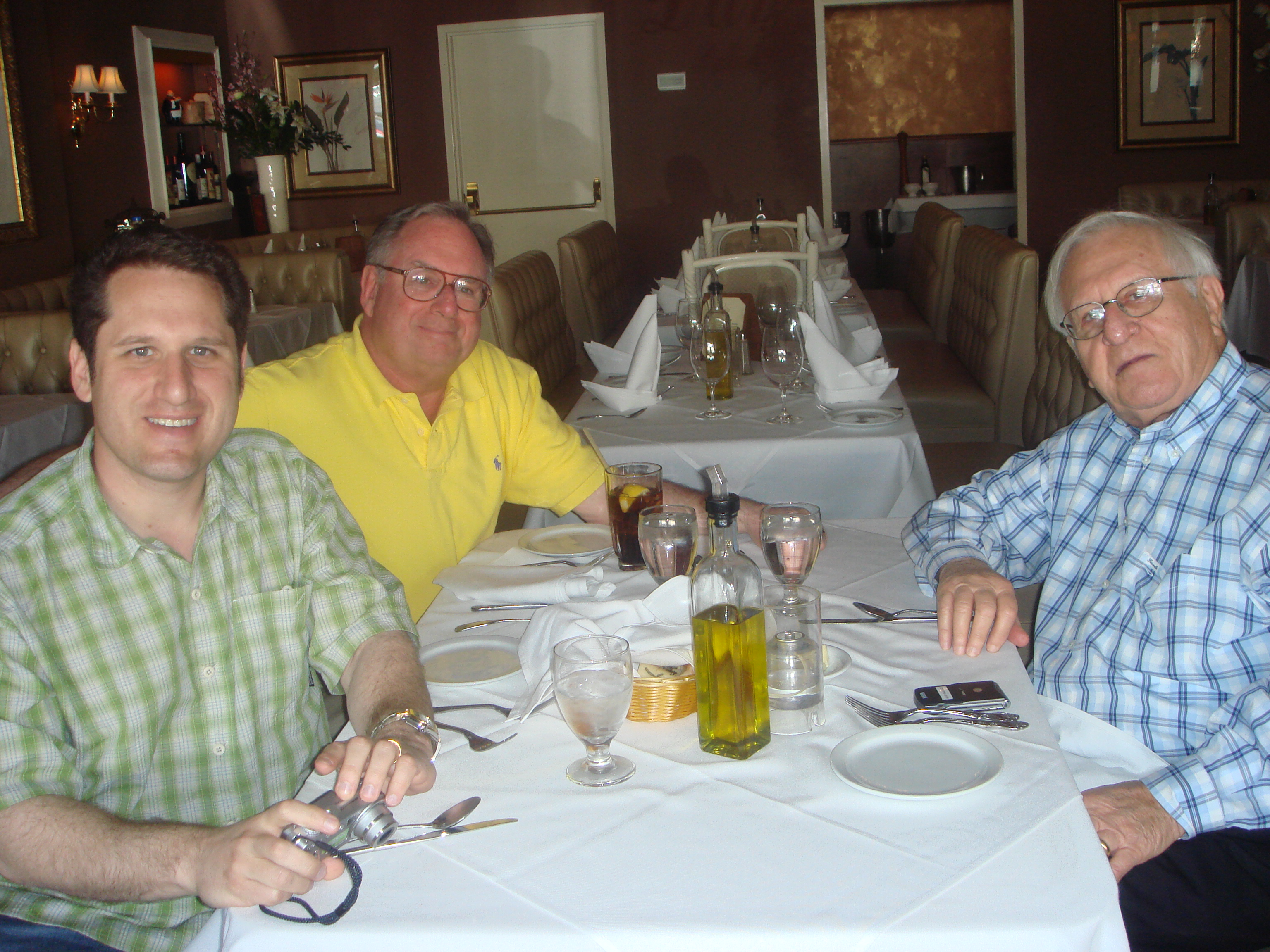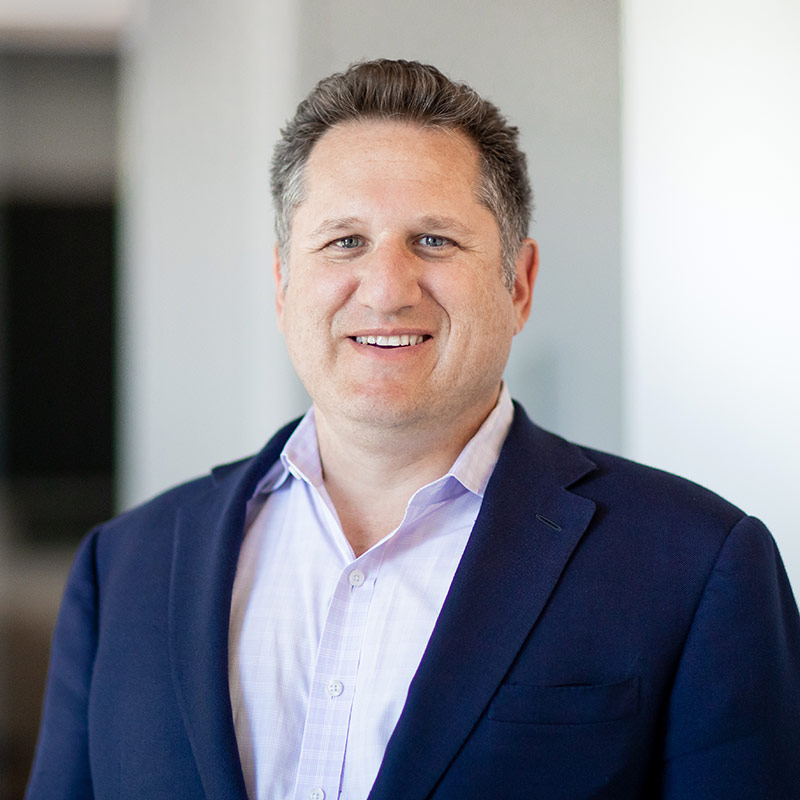Tribute to Arnold Spielberg

Arnold Spielberg relaxes with USC Shoah Foundation Founding Executive Director June Beallor and Chief Technology Officer Sam Gustman
By Sam Gustman
I have been the Chief Technology Officer of the USC Shoah Foundation since 1994. I first met Arnold in 1996 when I was 27 years old and he came on a tour of the Shoah Foundation. Arnold was 79 years old.
I didn’t know anything about Arnold’s history as an engineer when we first met, so I was surprised as I was giving him a tour that he kept talking about the various solutions and systems we had in place with deep familiarity. And after a while talking to him, I realized he was more than familiar with the technologies, he was telling me stories that ranged from years to decades old about how he had used or built something similar. It was like talking to one of my college professors.
It turns out Arnold has had a large impact on my entire life.
From the age of seven, I took computer programming lessons using a computer at Dartmouth College called the GE-225, built by General Electric. Arnold invented the GE-225 for General Electric who started selling the computer in 1960. In 1963, General Electric donated a GE-225 to Dartmouth College, where my father was and still is a professor. Using the donated GE-225, researchers at Dartmouth invented a time-sharing system called DTSS that allowed students and faculty to use computer terminals on one shared environment, all linked together and communicating at the same time, like the internet is today. Dartmouth also created the programming language Basic, which made it easy for students and faculty to start writing software. All this effort based on a computer Arnold created started me on the path to a career in computing.
When I went to college, I received my degree in Computer Engineering. I interned for the United States Army Corps of Engineers, where I specialized in Digital Library and Geographic Information Systems. This was my training ground for learning the techniques I would need to build systems to collect, digitize, catalog, preserve and provide access to the 55,000 testimonies in the USC Shoah Foundation’s Visual History Archive. It turns out that in 1954, Arnold invented one of the first digital library systems and created a patent called the Electronic Library System. This patent was the base for the technology that would allow me to create the systems that run the Visual History Archive.
In 1994, when I was 24 years old and at the Army Corps of Engineers, I received a call from Steven Spielberg’s production company, Amblin. I was asked to come run the technology for the Shoah Foundation. This is when I would run into Arnold’s third masterpiece that would guide my life and career: Steven Spielberg.
In 1996, Arnold, whose every action had helped form the engineer I was, and was becoming, had come to help. His timing could not have been more perfect. We were tackling some of the hardest technical problems in the world and we had everyone from the CIA and NSA to the largest technology companies working with us. Not only did Arnold start working with me, but he became a close friend and a cherished mentor. He brought the experience and knowledge of someone who had done my job for 60 years to our efforts.
The first thing he did with me was give me some management training, which I sorely needed. But soon after that he was meeting with vendors and government agencies and helping us get the equipment we needed to succeed. In 1998, Arnold brought a company he had worked with for decades called Unisys to the Shoah Foundation and convinced them to donate all the computers we needed to catalog the 55,000 interviews. Arnold spent hours with me and the cataloging department helping us realize the vision of the digital library system we had invented by augmenting it with his decades of knowledge and experience.
And during all of this we would eat, laugh, play, and engineer. No one I have ever known could eat more than Arnold. He had an appetite for everything, including life. I think in large part that is how he made it to the age of 103. That, and the deep desire to see what his children would do next. He certainly loved his son’s creation of the Shoah Foundation.
Arnold continued to work with us at USC Shoah Foundation until his late 80s. I remember when he had to stop coming to work. At 86, he just could not drive anymore. However, I was lucky enough to live 5 minutes from his house. I would bring him to my house, or we would go out to eat and talk, until he could not do that anymore, either. But no matter how much his body failed him, his mind was sharp, and I enjoyed our talks well past his hundredth birthday.
I am not sure what I would have done without Arnold and all that he has made and done. I certainly do not know what would have happened without his friendship all these years. I feel so fortunate to have had Arnold, as an inventor, friend, and mentor, in my professional and personal life. Well done Arnold. I miss you already. Arnold died at 103 on August 25th, 2020.

Arnold Spielberg visiting with Justine Gustman and Jana Gustman at Sam’s house

Arnold Spielberg (right) with Sam Gustman (left) and his father Alan Gustman eating at Dante’s
Like this article? Get our e-newsletter.
Be the first to learn about new articles and personal stories like the one you've just read.
